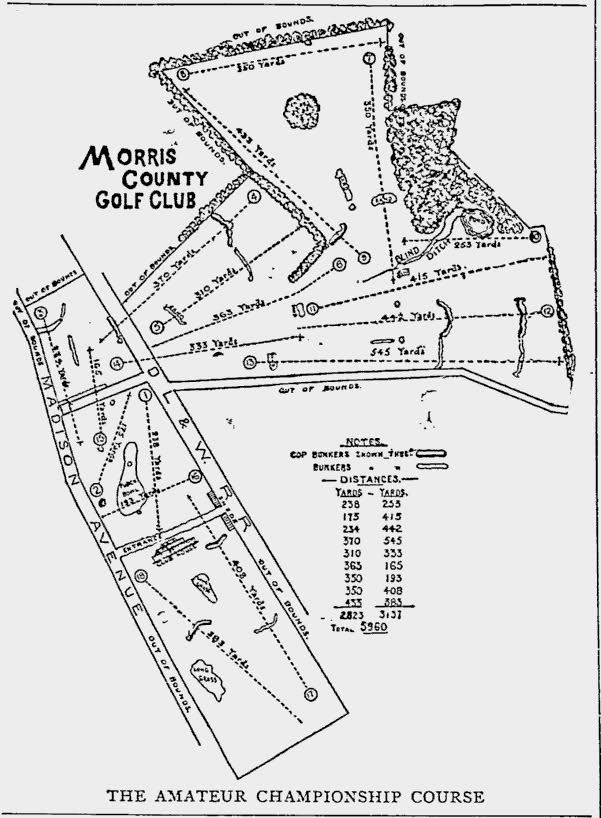To cross compare the Oakmont course that was designed in 1903 to the types of courses that were highly regarded during those days, following please find the layouts of all of the courses hosting the U.S. Amateur tournament, the most prestigious title in American golf, from inception in 1895 through 1907. As noted, most are in the Victorian style of cross-bunkered simplicity of design and many would soon be outmoded by the Haskell ball as well as changes in architectural thinking.
Contrast these with an Oakmont course that was 6400 yards with a routing that is essentially the same as todays. Consider also the thinking that bunkering wouldn’t be some rote affair with a cross bunker every statutory distance from the tee or for the next carry and perhaps you’ll see better why I feel Oakmont was almost revolutionary (and certainly visionary) in its day and why I asked the questions I have in this thread seeking to learn who the Fownes family learned from and who they were influenced by.
Newport – 1895 – Willie Davis

Shinnecock Hills – 1896 – Willie Davis/Willie Dunn

Chicago – 1897 – Charles Blair Macdonald/HJ Whigham/James and David Foulis

Morris County – 1898 – Committee/Tom Bendelow

Onwentsia – 1899 – HJ Whigham and Robert Foulis

Garden City – 1900 – Devereux Emmett, some Walter Travis suggestions possibly implemented by then.

Atlantic City – 1901 – HJ Tweedie/John Reid

Glen View – 1902 – Richard Leslie

Nassau – 1903 – Committee Members/Tom Bendelow?

Baltusrol – 1904 – David Hunter

Chicago – 1905 (See Above)
Englewood – 1906 – Tom Bendelow (Only have a much later graphic from 1915 but cross bunkers still in evidence)

Euclid – 1907 – Bert Way
